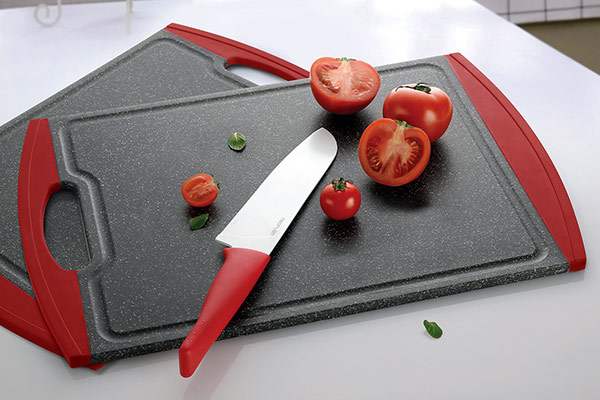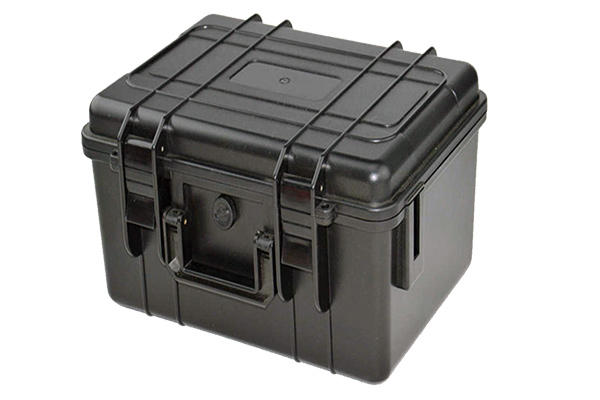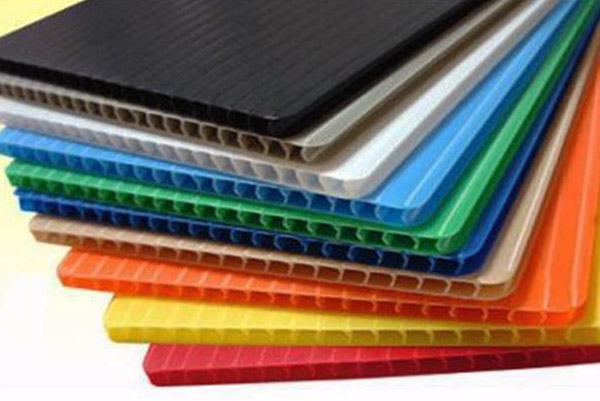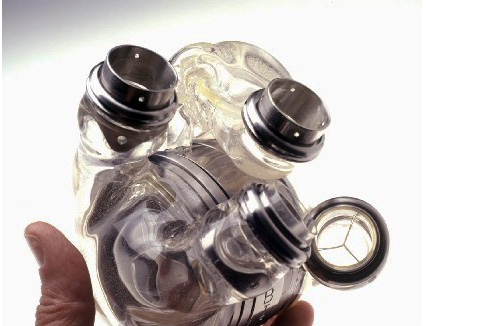When developing a new product, there are so many different types of plastic available to use. Choosing the right one depends on application-specific criteria.
In our experience, developers should consider if the plastic material is food safe, impact resistant, flexible, engineering grade, fire retardant or biocompatible. The below are our recommendations on the most common plastics used for each product requirement.

Food Safe
Plastics that are used for food production, cooking, and storage need to meet a few criteria. They must be sterile and not impart any flavor to the food item. They must be non-biodegradable in most cases, non-absorbing and impervious to edible oils and acids.

PET (polyethylene terephthalate) is nearly ideal in all of these categories, which is one reason why it’s the most common plastic for food packaging. It’s found everywhere for use in water and soda bottles and other food containers. It’s tough and shatterproof but also lightweight and easily recycled. PET, in the form of fibers, is called polyester and is the most common type of artificial fabric for clothing and insulation.
LDPE (low-density polyethylene) is used to make food bags and cling film, while HDPE (high-density polyethylene) is great for plastic cutting boards. PP (polypropylene) is also found in food containers, such as yogurt cups.

In should also be noted that many engineering grade plastics are also considered food safe but are only used in food processing equipment or other durable products because of their higher cost.
Impact Resistant
Plastic in this category needs to withstand repeated blows and snap back to its original shape without denting or cracking.

ABS (acrylonitrile butadiene styrene) and HIPS (high-impact polystyrene) are used to make power tool housings, tool boxes, luggage, sporting goods and other products that take a lot of abuse but remain rigid. These resin compounds can be made even tougher with the addition of glass or carbon fibers.
There is also a big market for transparent plastic as a replacement for glass. PC (polycarbonate) is great for motorcycle windscreens, plastic eyeglass lenses and for lightweight protective shields.

Flexible
All plastics are capable of some degree of flexibility. Many products don’t need great strength but must be flexible without losing their shape entirely.
PP (polypropylene) is the king of plastics for making living hinges like you would find on the caps of shampoo bottles or pill dispensers. This kind of plastic can be flexed thousands of times before breaking, well within the lifetime of the product.

HDPE is more durable for hard use, so you find it in heavy-duty trash cans that get tossed around a lot.
TPU (thermoplastic polyurethane) is a type of elastomer. It’s stretchy and rubbery so it’s used for caster wheels, sealing rings and gaskets, cable housings and for sporting goods. The degree of softness and elasticity is controlled by varying the chemical composition.
Engineering Grade
Engineering plastics are crystalline polymers with mechanical properties that are similar to metal. They are strong and durable like their metal counterparts while still being lightweight and less expensive to produce in large production volumes like we do at Star.

This category includes plastic materials like ABS, nylon (polyamide), PEEK (polyetheretherketone) and POM (polyoxymethylene). They are all stiff, rigid, temperature resistant and low-friction. Also, PEEK, ABS and nylon can all be 3D printed for even more design options.
Some products made from engineering plastics include ball bearings, gears and shafts, knife handles, plastic gun bodies, switches and other weight-savings parts for automotive and aerospace applications.
Fire Retardant
In the presence of a flame or other high heat source, any plastic will melt and some will catch fire. The concern about fire resistance is especially important when plastic is used in a confined space like a car interior or airplane cabin.
However, plastics vary in their response to fire. Some are self-extinguishing when the heat source is removed. Others may propagate flames vertically or produce dangerous fumes.

The most naturally fire resistant plastic is PVC (polyvinyl chloride). The presence of chlorine helps to rob the fire of oxygen needed for combustion, but of course chlorine gas is another serious problem.
The secret to fire resistance is either to coat the plastic material with a fire-proofing chemical or add impurities to the compound which will help to interrupt the combustion cycle. Some of these additives include boron, antimony, chlorine, bromine, aluminum and phosphorous.
Because there are so many variables and formulations it is best to check with the manufacturer to confirm what UL fire safety rating the material has. The highest rating is UL94-VO, meaning the material does not burn, is self-extinguishing and will not drip hot melt onto the floor. A complete explanation of UL flammability ratings can be found here.
Biocompatible

The use of plastic components for medical devices and equipment has increased greatly over the last several years. To protect patients and to regulate the industry, the ISO-10993 standard helps to codify the various medical uses for plastic material.
Resins can be used to make blood stents, artificial joints and bone replacements, catheters, prosthetics, infusers, heart monitors, valves, tubes, pill dispensers and many more.
It’s critical to use the right resin for each application. The ISO guidelines determine the “biological risk” assessment based on the interaction with the body: permanently implanted, in temporary contact with the skin, or for use in medical appliances.
Based on these categories, we can suggest the following:
Short-term and skin contact: PE, PS, Nylon, PVC, Teflon, PEEK, PP, PPSU
Long-term contact or internal medicine: PPSU, HDPE, PMMA, epoxy (for dental implants)
Medical equipment and tools: PEEK, POM, PMMA, PC, PVC, HDPE
Free product review for your next project
At Star Rapid we offer a range of in-house prototyping and production services including plastic injection molding or CNC machining.
Our engineers can help you choose the best plastic to use for your next product and can also advise you on how to optimize your designs for the best results. Upload your CAD files today to get a quote and see how we can support you with your rapid tooling, prototyping and volume production needs.







